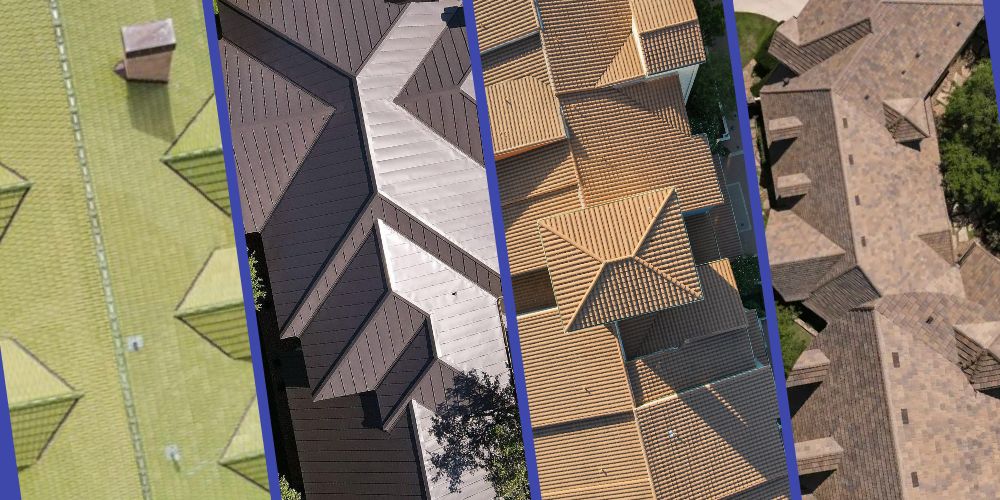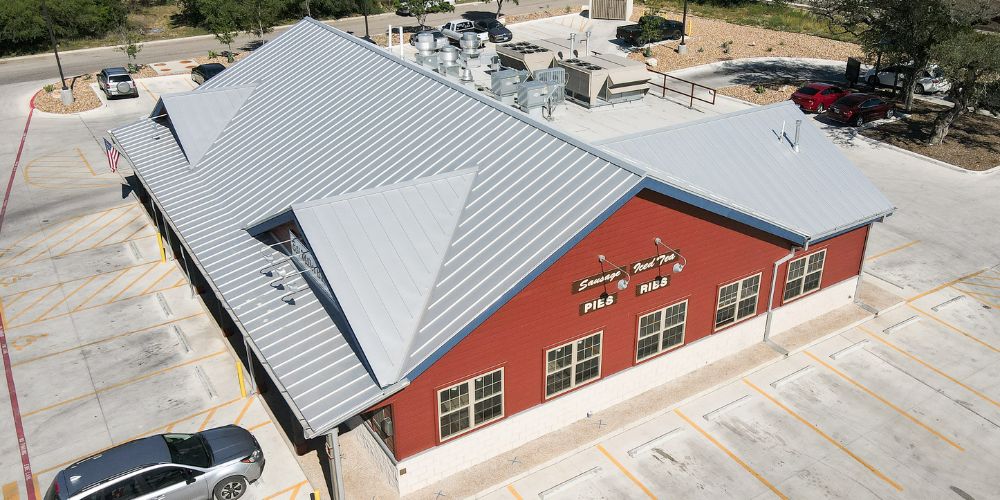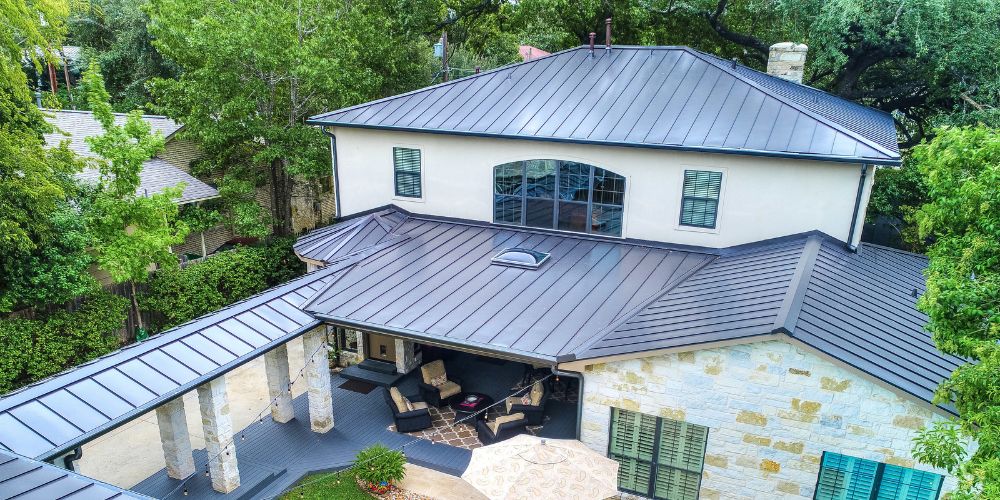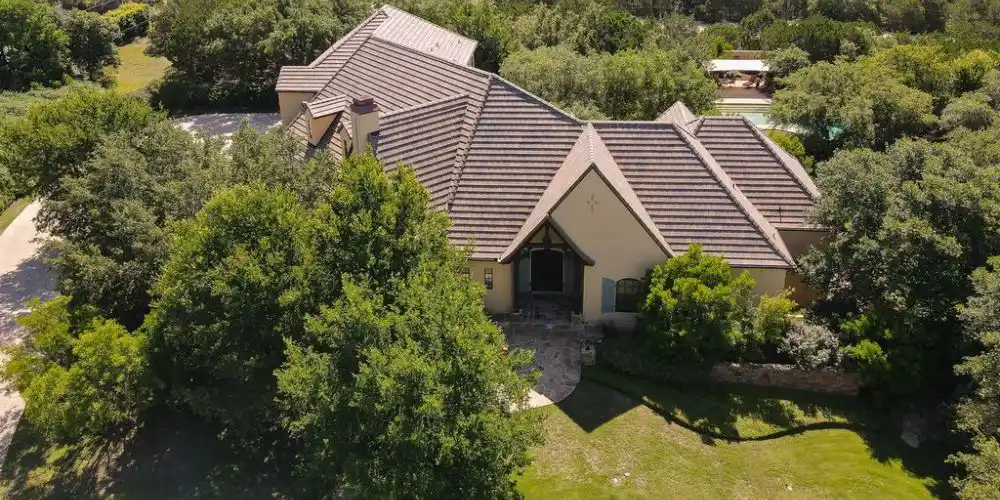Deciding on the right roofing material is critical, as it can significantly impact the beauty, durability, and energy efficiency of your property. With so many options available, choosing the best material for your home based on your needs and budget can feel overwhelming. That’s why this guide will explore the top roofing materials, their pros and cons, and key factors to consider when selecting the right one for your home.
Choosing the Best & Right Roofing Material for Your Home
Selecting the proper roofing material involves several important considerations. The right choice can enhance your home’s overall look, lifespan, energy efficiency, and even its resale value. In this section, we’ll discuss the essential factors to help you make an informed decision that aligns with your home’s style and your personal taste.
Factors To Consider When Selecting A Roofing Material
- Climate: Choose materials that can withstand your local weather conditions, such as strong winds, heavy rain, or extreme temperatures.
- Budget: Consider both the initial cost and long-term maintenance expenses.
- Durability: Look for materials with a long life cycle that resist environmental factors.
- Weight: Ensure your roof structure can support the weight of the chosen roofing material.
- Local Building Codes: Verify that your selected material complies with local regulations.
Roofing Material Compatibility With Different Home Styles
Each roofing material adds its unique touch to your home’s look and feel. It’s essential to pick one that complements your house’s architecture. For example, asphalt shingles are versatile and work well with almost any architectural style, whether traditional or modern. Metal roofs provide a sleek, contemporary appearance suitable for minimalist and industrial designs. Tile roofs, on the other hand, are ideal for Mediterranean, Spanish, or Southwestern-style homes, offering elegance and a classic look.
DIY vs. Professional Installation
Installing a new roof can be done as a DIY project or by hiring professionals. While DIY installation might save money upfront, it requires significant skills, experience, and time. Improper installation can lead to frequent issues like leaks, poor insulation, or even structural damage. Hiring professional roofers ensures the job is done correctly, efficiently, and to high standards.
Roofing Material And Home Value
The roofing material you choose can significantly impact your home’s resale value. High-quality, durable materials like slate or metal can increase your property’s value, as these options are known for their longevity and low maintenance. Potential buyers often see this as a long-term investment, reducing future roofing concerns.
Eco-Friendly Roofing Options
Eco-friendly roofs are becoming increasingly popular among homeowners looking to minimize environmental impact. Materials like recycled metal, clay tiles, and wood shakes offer sustainable and attractive choices. Green roofs, where vegetation is planted on the rooftop, provide excellent insulation and reduce water runoff. Solar shingles, which combine roofing with solar energy generation, are another smart, eco-conscious option.
Types of Best Roofing Materials
Selecting the best roofing material requires balancing aesthetics, durability, and cost. Here are some top choices with their unique features:
Asphalt shingles
Asphalt shingles, which are cheap and adjustable, are among North America’s most favored roofing materials.
- Pros: Inexpensive, easy to install, and available in many styles and colors.
- Cons: Shorter lifespan compared to other materials; can crack in strong winds.
- Maintenance Requirements: Regular checks for damage or moss growth, with timely repairs needed.
- House Style: Versatile, blending well with traditional and suburban designs.
- Average Cost: Available for installation starting from $5,000 to $12,000, depending on the home’s size.
Metal Roof

Metal roofs are famous for being very strong and giving a home a modern look. Because of this, many people choose metal roof installation when they want their roof to last a long time.
- Pros: Extremely durable, energy-efficient, and can last 40-70 years with minimal upkeep.
- Cons: Higher initial cost; can be noisy during rain or hailstorms.
- Maintenance Requirements: Minimal, but occasional checks for rust and tight fasteners are advisable.
- House Style: Suits modern, ranch, or rustic homes, offering a fresh, contemporary look.
- Average Cost: Typically costs between $10,000 and $18,000 to install.
Wood Shingles/Shakes
Wood shingles and shakes provide a natural, rustic appearance that many people find appealing. They are also attractive and environmentally friendly.
- Pros: Natural, rustic appearance; environmentally sustainable; provides good sound insulation.
- Cons: Prone to fire, rot, and insect damage if not properly treated; requires more maintenance.
- Maintenance Requirements: Regular inspections for rot, mold, and insect issues; periodic sealing or painting.
- House Style: Ideal for cottages and rustic-style homes, adding warmth and charm.
- Average Cost: Installation ranges from $10,000 to $20,000.
Slate Roof
Slate roofs are famous for being very strong and beautiful. They match almost every genre, and you can see slate roofing in expensive, long-lived houses or fancy homes.
- Pros: Extremely durable, fire-resistant, and can last over 100 years; offers a natural, timeless look.
- Cons: Very heavy, requiring additional structural support; among the most expensive roofing materials.
- Maintenance Requirements: Low, but periodic inspections for broken or loose tiles are necessary; repairs should be done by professionals.
- House Style: Best suited for Colonial, European, and French-inspired architecture, providing a sophisticated, classic appearance.
- Average Cost: Installation typically costs between $20,000 and $40,000.
Tile Roof

Tile roofs are traditionally elegant, mostly seen on houses with Mediterranean, Spanish, or Southwestern designs. Tile roofing is a popular choice for its classic appearance and durability.
- Pros: Highly durable, fire-resistant, and energy-efficient, with a lifespan of 50-100 years.
- Cons: Heavy, requiring a strong roof structure; can crack under impact or extreme conditions.
- Maintenance Requirements: Low, but periodic inspections for cracked tiles are necessary; quick repairs prevent leaks.
- House Style: Complements Mediterranean, Spanish, and Southwestern designs, offering elegance and classic appeal.
- Average Cost: Installation costs range from $15,000 to $30,000.
Also Read: Most Affordable Options For Commercial Roofing in San Antonio
How to Choose a Roofer?
Choosing the right roofer is the most critical step in any roofing project. Start by researching local contractors, reading reviews, and seeking referrals from friends and neighbors. Ensure the contractor meets all legal requirements, compare quotes, and verify their experience with your chosen roofing material. A reliable roofer should also offer references and provide warranties for both materials and workmanship.
Selecting the right roofing material and contractor is vital for your home’s strength, appearance, and value. From durable metal roofs to versatile asphalt shingles and elegant slate, each option offers unique benefits that require careful consideration. Understanding these options and choosing a trustworthy roofer ensures the success of your roofing project. For expert and dependable roofing services, consider Mangold Roofing. With extensive knowledge and a strong commitment to quality, we are well-equipped to meet your roofing needs.




